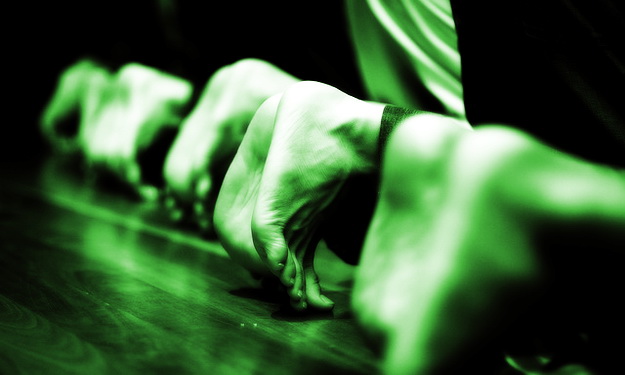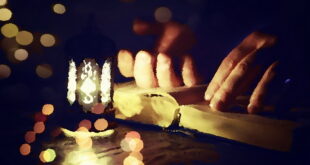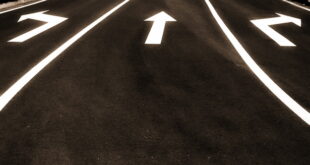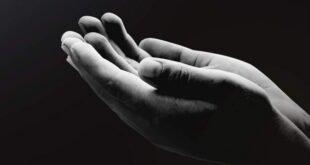If a person does not prostrate on all seven parts of the body, then is his prayer invalid?
Praise be to Allah.
When a worshiper prostrates, he must prostrate on all seven parts of the body on which the Prophet (peace and blessings of Allah be upon him) commanded us to prostrate. They are: the face, including the forehead and nose; the two hands; the two knees; and the edges of the two feet (i.e., the toes).
Al-Nawawi said: “If he omits any of them, then his prayer is not valid.” [From Sharh Muslim]
Shaykh Ibn ‘Uthaymeen said:
“It is not permissible for a worshiper to lift up any of these seven parts of the body when prostrating, because the Prophet (peace and blessings of Allah be upon him) said: “I have been commanded to prostrate on seven bones: on the forehead,” and he pointed to his nose, “and on the two hands, the two knees and the edges of the two feet (i.e., the toes).” [Narrated by al-Bukhaari, 812; Muslim, 490.] If he lifts up one or both of his feet, or one or both of his hands, or his forehead or nose, or both of them, then his prostration is invalid and does not count, and if his prostration is invalid then his prayer is also invalid.” [Liqaa’aat al-Baab al-Maftooh by Shaykh Ibn ‘Uthaymeen, 2/99.]
Sujood is a rukn (pillar) of the prayer, meaning that if a capable person does not perform it, whether he left it intentionally or unintentionally the prayer would be invalid. If he did not perform a pillar unintentionally (out of forgetfulness for example), then he returns back to that position when he remembers and repeats what came after it in the prayer, completing it fully, and then adds two sajdahs at the end called sajdatay as-sahw (sujood ul-sahw), prostrations made due to forgetfulness.
This includes if a rukn (pillar) was not performed in a valid way, like in the example mentioned, when a capable person makes sajdah on some but not all of the seven body parts.
The perfect way is for the part which is meant to touch the ground in prostration should touch it fully, because when the Prophet (blessings and peace of Allah be upon him) prostrated, he made the tips of his toes point towards the qiblah [narrated by al-Bukhaari, 785]; and because of the report narrated by Abu Dawood from Rifaa‘ah ibn Raafi‘ (may Allah be pleased with him) from the Prophet (blessings and peace of Allah be upon him) who said to the one who did not pray properly: “When you prostrate, make your prostration firm.” Classed as hasan by al-Albaani in Saheeh Abi Dawood. Making the part which is meant to touch the ground in prostration touch it fully is part of making the prostration firm.
The sajdah which is a pillar itself is made up of seven necessary elements:
1) the face with both of the following on the floor:
a) forehead
b) nose
2 & 3) the two hands
4 & 5) the two knees
6 & 7) the two feet, the edges of the toes
that is based on the hadeeth mentioned.
And the hadeeth that proves that any missing action mentioned above would render the sajdah invalid is the hadeeth narrated by Ibn ‘Abbas (may Allah be pleased with him):
“There is no prayer for someone whose nose does not touch the floor as much as his forehead.”
Al-Albaanee said that it was collected by Ad-Daaraqutnee, al-Bayhaqee, and al-Haakim, who called it saheeh according to al-Bukhaaree’s conditions and Ath-Thahabee approved of that verdict.
And in one wording collected by at-Tabaraanee (used as support for the authenticity of the above narration):
“The prayer of the one who does not place his nose along with his forehead to the ground when he prostrates is invalid.”
These narrations show the importance of the two parts of only one pillar of sujood being fulfilled properly, and that if one of the two is missing or deficient, then the prayer is invalid.
Al-Albaanee says in conclusion, “This is an explicit text that shows that when the nose is not touching the floor the prayer is invalid.”
Refer to: Aslu Sifatis-Salaatin-Nabee (2/733-735) sallallaahu ‘alayhe wa sallam
Knowing this issue is of the highest level of importance, since it is related to the basic elements of a pillar of our religion, may Allah bless us all with understanding of His Religion.
The Prostration of forgetfulness (sujood ul-sahw)
The Prostration of forgetfulness (sujood ul-sahw) is required whenever one inadvertently adds extraneous parts or misses parts or is in doubt regarding parts of the arkaan (essential pillars, singular rukn) of the prayer and/or its other requirements. The question is what to do when in doubt regarding the number of raka’aat prayed, and the answer is covered in the following points:
First, definition of doubtfulness: when two possibilities are equally probable without knowing or feeling one is more likely true than the other.
Second, when one doubts after performing salaam (tasleem): One should disregard such doubt. For example, take the case of one who has completed praying dhuhr then questions after finishing the prayer, “Did I really pray four raka’aat or only three?” Such doubt should be disregarded completely unless it is substantiated by clear and certain indications; otherwise, it opens the door to waswasah (the whispering of Satan) and unwarranted extraneous additions to the prayer.
Third, when one doubts during the prayer; this must fall into one of the following two cases:
One can discern that one of the two possibilities about which one is in doubt is more likely or more certain by virtue of one’s prevalent feeling or most likely inclination: In this case, one should act according to his best assumption and perform the prostration of forgetfulness after the salaam. The evidence for this opinion is what was related by Ibn Mas’ood, may Allah be pleased with him, that the Prophet (blessings and peace of Allah be upon him) prayed either an extraneous addition or missed an essential part of the prayer (one of the narrators of the hadeeth was in doubt which). After saying ‘salaam,’ it was said to him, “Oh Prophet of Allah, has there been a new change in [the way of performing] the prayer?” He replied, “Why [would you say that]?” They responded, “You prayed in such and such manner.” So he bent his legs and faced towards the qiblah and performed two prostrations then performed tasleem (saying ‘salaam’ to the right then the left). After facing towards us, he said, “If something new had been introduced regarding the prayers, I would have informed you about it. To the contrary, I am but a human like you—I forget as you forget, so if I forget, remind and inform me. If any of you doubts during his prayer then he should try to discern the more certain and correct case, then complete the prayer based upon it, then perform tasleem, followed by two prostrations.” [Al-Bukhari, Fath Al-Baari #401].
One cannot discern nor is there any prevalence apparent to indicate which of the two cases is more certain:
In this case, one should assume the least of the two and continue based on this assumption, then perform the two prostrations of doubt after tasleem. An example of this would be one who while praying the dhuhr prayer is completely uncertain whether he has completed three or four raka’aat and cannot determine which is more true. Thus, he would assume the lesser of the two, i.e. three, and complete another raka’ah then sit for the tashahhud, then prostrate two prostrations before saying “salaam.”
The basis for this ruling is the hadeeth related by Abu Sa’eed Al-Khudri, may Allah be pleased with him, in which he said: the Prophet (blessings and peace of Allah be upon him) said, “If any of you doubts during his prayer and he does not know how many [raka’aat] he has prayed, whether it is three or four, then he should discard and cast away his doubt. He is to continue upon what one is sure of [i.e. the lesser] then perform two prostrations before making tasleem. If he ends up [in reality] praying five [raka’aat], then his prayer will be an intercession for him; and if he ends up completely the [requisite] four [raka’aat] then it is targheeman for shaytaan.” (targheeman: i.e., a way of vexing Satan and humiliating and debasing him, as well as rejecting him as a result of his failure to achieve his desire of disturbing the worshipper.) [Al-Nawawi in explaining the hadeeth from Sahih Muslim, 5/60].
I hope this helps make the issue clear, and Allah knows best.
From: http://islamqa.info/en/211 and other islamqa.info fatawa.
 navedz.com a muslim's Quest for the truth
navedz.com a muslim's Quest for the truth









